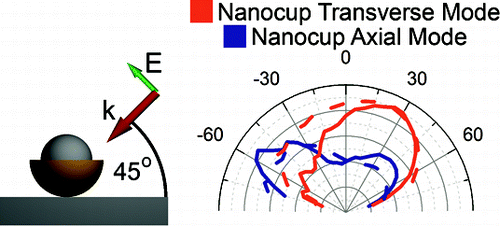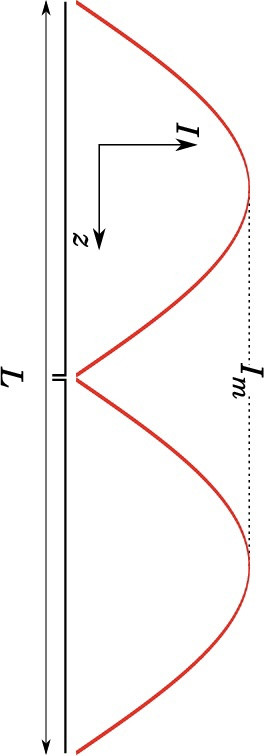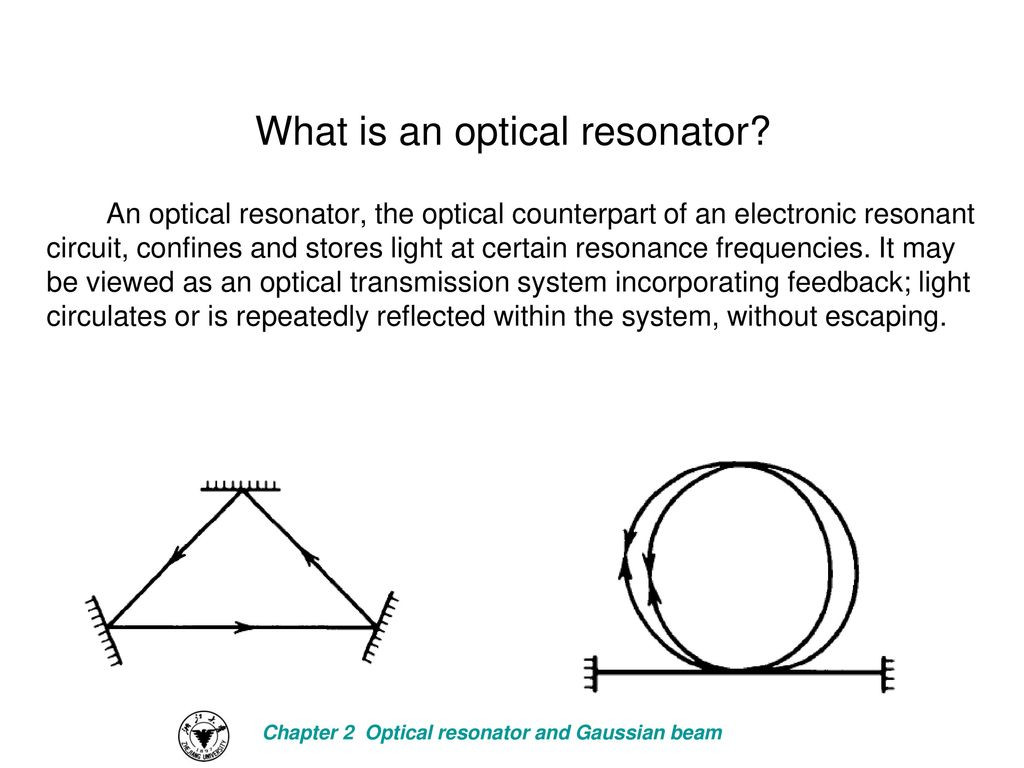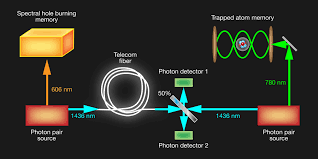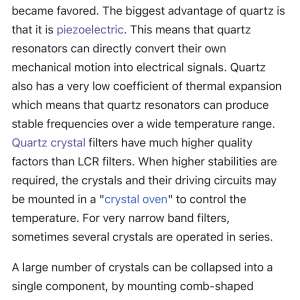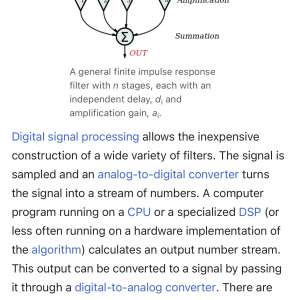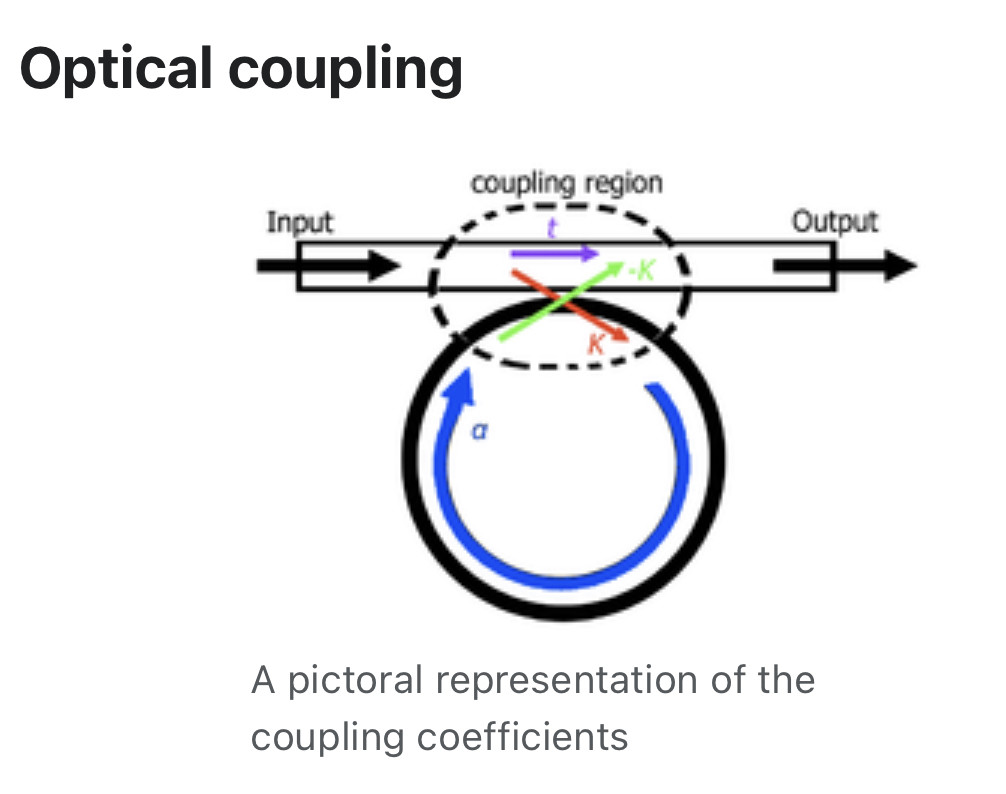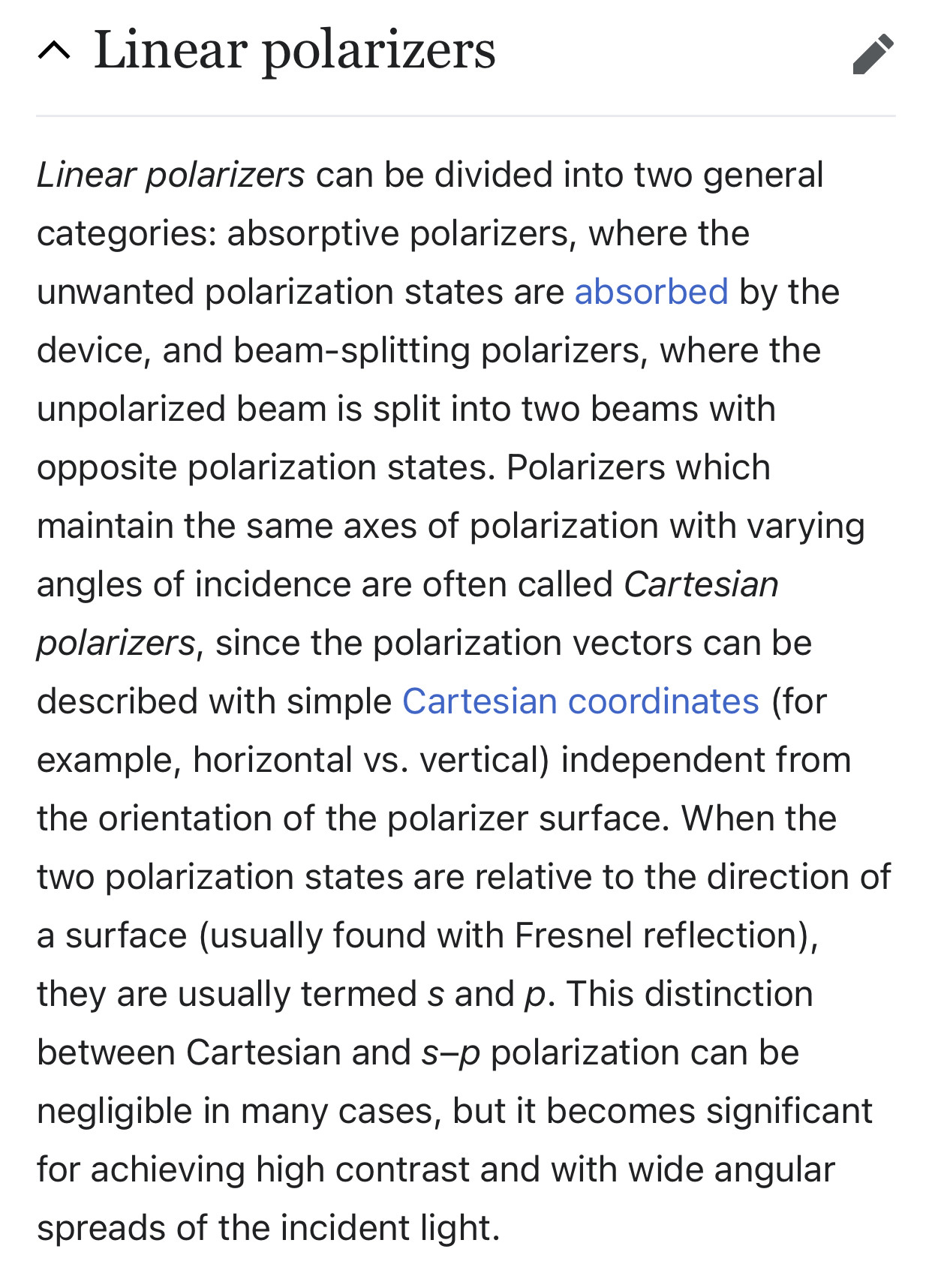The Mac
@TheMac
20 July, 10:34
As optical frequency nanoantennas, reduced-symmetry plasmonic nanoparticles have light-scattering properties that depend strongly on geometry, orientation, and variations in dielectric environment. Here we investigate how these factors influence the spectral and angular dependence of light scattered by Au nanocups. A simple dielectric substrate causes the axial, electric dipole mode of the nanocup to deviate substantially from its characteristic cos2 θ free space scattering profile, while the transverse, magnetic dipole mode remains remarkably insensitive to the presence of the substrate. Nanoscale irregularities of the nanocup rim and the local substrate permittivity have a surprisingly large effect on the spectral- and angle-dependent light-scattering properties of these structures.
Notice: Undefined index: tg1tga_access in /home/admin/www/anonup.com/themes/default/apps/timeline/post.phtml on line 396
The Mac
@TheMac
20 July, 10:36
In response The Mac to his Publication
Notice: Undefined index: tg1tga_access in /home/admin/www/anonup.com/themes/default/apps/timeline/post.phtml on line 396
Paul Robb
@Keeperoffools3
20 July, 10:40
In response The Mac to his Publication
Terrorist
Notice: Undefined index: tg1tga_access in /home/admin/www/anonup.com/themes/default/apps/timeline/post.phtml on line 396
The Mac
@TheMac
21 July, 05:34
In response Paul Robb to his Publication
Bioterrorist.
Notice: Undefined index: tg1tga_access in /home/admin/www/anonup.com/themes/default/apps/timeline/post.phtml on line 396
The Mac
@TheMac
21 July, 05:35
In response The Mac to his Publication
B
1 0
1 0
Notice: Undefined index: tg1tga_access in /home/admin/www/anonup.com/themes/default/apps/timeline/post.phtml on line 396
The Mac
@TheMac
21 July, 05:38
In response The Mac to his Publication
Notice: Undefined index: tg1tga_access in /home/admin/www/anonup.com/themes/default/apps/timeline/post.phtml on line 396
The Mac
@TheMac
21 July, 05:39
In response The Mac to his Publication
Notice: Undefined index: tg1tga_access in /home/admin/www/anonup.com/themes/default/apps/timeline/post.phtml on line 396
The Mac
@TheMac
21 July, 05:42
In response The Mac to his Publication
Notice: Undefined index: tg1tga_access in /home/admin/www/anonup.com/themes/default/apps/timeline/post.phtml on line 396
The Mac
@TheMac
21 July, 05:44
In response The Mac to his Publication
Quantum networks would connect quantum computers through a system that also operates at a quantum, rather than classical, level. In theory, quantum computers will one day be able to perform certain functions faster than classical computers by taking advantage of the special properties of quantum mechanics, including superposition, which allows quantum bits to store information as a 1 and a 0 simultaneously.
As they can with classical computers, engineers would like to be able to connect multiple quantum computers to share data and work together -- creating a "quantum internet." This would open the door to several applications, including solving computations that are too large to be handled by a single quantum computer and establishing unbreakably secure communications using quantum cryptography.
As they can with classical computers, engineers would like to be able to connect multiple quantum computers to share data and work together -- creating a "quantum internet." This would open the door to several applications, including solving computations that are too large to be handled by a single quantum computer and establishing unbreakably secure communications using quantum cryptography.
Notice: Undefined index: tg1tga_access in /home/admin/www/anonup.com/themes/default/apps/timeline/post.phtml on line 396
The Mac
@TheMac
21 July, 05:46
In response The Mac to his Publication
In order to work, a quantum network needs to be able to transmit information between two points without altering the quantum properties of the information being transmitted. One current model works like this: a single atom or ion acts as a quantum bit (or "qubit") storing information via one if its quantum properties, such as spin. To read that information and transmit it elsewhere, the atom is excited with a pulse of light, causing it to emit a photon whose spin is entangled with the spin of the atom. The photon can then transmit the information entangled with the atom over a long distance via fiber optic cable.
Notice: Undefined index: tg1tga_access in /home/admin/www/anonup.com/themes/default/apps/timeline/post.phtml on line 396
The Mac
@TheMac
21 July, 05:47
In response The Mac to his Publication
It is harder than it sounds, however. Finding atoms that you can control and measure, and that also aren't too sensitive to magnetic or electric field fluctuations that cause errors, or decoherence, is challenging.
"Solid-state emitters that interact well with light often fall victim to decoherence; that is, they stop storing information in a way that's useful from the prospective of quantum engineering," says Jon Kindem (MS '17, PhD '19), lead author of the Nature paper. Meanwhile, atoms of rare-earth elements -- which have properties that make the elements useful as qubits -- tend to interact poorly with light.
"Solid-state emitters that interact well with light often fall victim to decoherence; that is, they stop storing information in a way that's useful from the prospective of quantum engineering," says Jon Kindem (MS '17, PhD '19), lead author of the Nature paper. Meanwhile, atoms of rare-earth elements -- which have properties that make the elements useful as qubits -- tend to interact poorly with light.
Notice: Undefined index: tg1tga_access in /home/admin/www/anonup.com/themes/default/apps/timeline/post.phtml on line 396
The Mac
@TheMac
21 July, 05:48
In response The Mac to his Publication
To overcome this challenge, researchers led by Caltech's Andrei Faraon (BS '04), professor of applied physics and electrical engineering, constructed a nanophotonic cavity, a beam that is about 10 microns in length with periodic nano-patterning, sculpted from a piece of crystal. They then identified a rare-earth ytterbium ion in the center of the beam. The optical cavity allows them to bounce light back and forth down the beam multiple times until it is finally absorbed by the ion.
In the Nature paper, the team showed that the cavity modifies the environment of the ion such that whenever it emits a photon, more than 99 percent of the time that photon remains in the cavity, where scientists can then efficiently collect and detect that photon to measure the state of the ion. This results in an increase in the rate at which the ion can emit photons, improving the overall effectiveness of the system.
In the Nature paper, the team showed that the cavity modifies the environment of the ion such that whenever it emits a photon, more than 99 percent of the time that photon remains in the cavity, where scientists can then efficiently collect and detect that photon to measure the state of the ion. This results in an increase in the rate at which the ion can emit photons, improving the overall effectiveness of the system.
Notice: Undefined index: tg1tga_access in /home/admin/www/anonup.com/themes/default/apps/timeline/post.phtml on line 396
The Mac
@TheMac
21 July, 05:49
In response The Mac to his Publication
In addition, the ytterbium ions are able to store information in their spin for 30 milliseconds. In this time, light could transmit information to travel across the continental United States. "This checks most of the boxes. It's a rare-earth ion that absorbs and emits photons in exactly the way we'd need to create a quantum network," says Faraon, professor of applied physics and electrical engineering. "This could form the backbone technology for the quantum internet."
Currently, the team's focus is on creating the building blocks of a quantum network. Next, they hope to scale up their experiments and actually connect two quantum bits, Faraon says.
Currently, the team's focus is on creating the building blocks of a quantum network. Next, they hope to scale up their experiments and actually connect two quantum bits, Faraon says.
Notice: Undefined index: tg1tga_access in /home/admin/www/anonup.com/themes/default/apps/timeline/post.phtml on line 396
The Mac
@TheMac
21 July, 05:52
In response The Mac to his Publication
Figure 1: Illustration of the entanglement of two distant quantum memories, operating at different wavelengths, using telecom photons transmitted over an internet fiber. Operation of the photon-pair source at the wavelengths shown on the left was demonstrated in the paper by Fekete et al. [1]. The source on the right can be constructed by the same approach and is easier to realize because the generated wavelengths are closer. In this example, entanglement is created by measurement of identical 1436nm photons, each produced by a different photon-pair source and interfered on a 50% beam splitter.
Notice: Undefined index: tg1tga_access in /home/admin/www/anonup.com/themes/default/apps/timeline/post.phtml on line 396
The Mac
@TheMac
21 July, 05:57
In response The Mac to his Publication
https://en.m.wikipedia.org...
https://en.m.wikipedia.org...
A waveguide filter is an electronic filter constructed with waveguide technology. Waveguides are hollow metal conduits inside which an electromagnetic wave may be transmitted. Filters are devices used to allow signals at some frequencies to pass (the passband), while others are rejected (the stopband). Filters are a basic component of electronic engineering designs and have numerous applications. These include selection of signals and limitation of noise. Waveguide filters are most useful in the microwave band of frequencies, where they are a convenient size and have low loss. Examples of microwave filter use are found in satellite communications, telephone networks, and television broadcasting.
https://en.m.wikipedia.org...
A waveguide filter is an electronic filter constructed with waveguide technology. Waveguides are hollow metal conduits inside which an electromagnetic wave may be transmitted. Filters are devices used to allow signals at some frequencies to pass (the passband), while others are rejected (the stopband). Filters are a basic component of electronic engineering designs and have numerous applications. These include selection of signals and limitation of noise. Waveguide filters are most useful in the microwave band of frequencies, where they are a convenient size and have low loss. Examples of microwave filter use are found in satellite communications, telephone networks, and television broadcasting.
Notice: Undefined index: tg1tga_access in /home/admin/www/anonup.com/themes/default/apps/timeline/post.phtml on line 396
The Mac
@TheMac
21 July, 06:02
In response The Mac to his Publication
https://en.m.wikipedia.org...
https://en.m.wikipedia.org...
https://en.m.wikipedia.org...
An optical ring resonator is a set of waveguides in which at least one is a closed loop coupled to some sort of light input and output. (These can be, but are not limited to being, waveguides.)
https://en.m.wikipedia.org...
https://en.m.wikipedia.org...
An optical ring resonator is a set of waveguides in which at least one is a closed loop coupled to some sort of light input and output. (These can be, but are not limited to being, waveguides.)
Notice: Undefined index: tg1tga_access in /home/admin/www/anonup.com/themes/default/apps/timeline/post.phtml on line 396
The Mac
@TheMac
21 July, 06:02
In response The Mac to his Publication
The concepts behind optical ring resonators are the same as those behind whispering galleries except that they use light and obey the properties behind constructive interference and total internal reflection. When light of the resonant wavelength is passed through the loop from input waveguide, it builds up in intensity over multiple round-trips due to constructive interference and is output to the output bus waveguide which serves as a detector waveguide. Because only a select few wavelengths will be at resonance within the loop, the optical ring resonator functions as a filter. Additionally, as implied earlier, two or more ring waveguides can be coupled to each other to form an add/drop optical filter.
Notice: Undefined index: tg1tga_access in /home/admin/www/anonup.com/themes/default/apps/timeline/post.phtml on line 396
The Mac
@TheMac
21 July, 06:04
In response The Mac to his Publication
filter (third-person singular simple present filters, present participle filtering, simple past and past participle filtered)
(transitive) To sort, sift, or isolate.
(transitive) To diffuse; to cause to be less concentrated or focused.
(intransitive) To pass through a filter or to act as though passing through a filter.
(transitive) To sort, sift, or isolate.
(transitive) To diffuse; to cause to be less concentrated or focused.
(intransitive) To pass through a filter or to act as though passing through a filter.
Notice: Undefined index: tg1tga_access in /home/admin/www/anonup.com/themes/default/apps/timeline/post.phtml on line 396
The Mac
@TheMac
21 July, 06:07
In response The Mac to his Publication
A polarizer or polariser is an optical filter that lets light waves of a specific polarization pass through while blocking light waves of other polarizations.[1][2][3][4] It can filter a beam of light of undefined or mixed polarization into a beam of well-defined polarization, that is polarized light. The common types of polarizers are linear polarizers and circular polarizers. Polarizers are used in many optical techniques and instruments, and polarizing filters find applications in photography and LCD technology. Polarizers can also be made for other types of electromagnetic waves besides visible light, such as radio waves, microwaves, and X-rays.
Notice: Undefined index: tg1tga_access in /home/admin/www/anonup.com/themes/default/apps/timeline/post.phtml on line 396
The Mac
@TheMac
21 July, 06:09
In response The Mac to his Publication
Certain crystals, due to the effects described by crystal optics, show dichroism, preferential absorption of light which is polarized in particular directions. They can therefore be used as linear polarizers. The best known crystal of this type is tourmaline. However, this crystal is seldom used as a polarizer, since the dichroic effect is strongly wavelength dependent and the crystal appears coloured. Herapathite is also dichroic, and is not strongly coloured, but is difficult to grow in large crystals.
A Polaroid polarizing filter functions similarly on an atomic scale to the wire-grid polarizer. It was originally made of microscopic herapathite crystals. Its current H-sheet form is made from polyvinyl alcohol (PVA) plastic with an iodine doping.
A Polaroid polarizing filter functions similarly on an atomic scale to the wire-grid polarizer. It was originally made of microscopic herapathite crystals. Its current H-sheet form is made from polyvinyl alcohol (PVA) plastic with an iodine doping.
Notice: Undefined index: tg1tga_access in /home/admin/www/anonup.com/themes/default/apps/timeline/post.phtml on line 396
Ultraviolet flow dichroisms of tobacco mosaic virus (TMV), TMV-RNA and TMV-protein were measured using three strains of TMV.
06:15 AM - Jul 21, 2021
In response The Mac to his Publication
Only people mentioned by TheMac in this post can reply
The Mac
@TheMac
21 July, 06:16
In response The Mac to his Publication
1. Large positive dichroisms were observed with three strains of TMV, namely ordinary, bean form of bean, and tomato strains (TMV-OM, TMV-B and TMV-T, respectively) at about 255, 276, 284 and 290 nm. The positive dichroisms were confirmed with reconstituted protein assemblies of TMV-OM and TMV-B at about 276, 284 and 290 nm where tyrosine and tryptophan residues of these proteins contribute. These results show that the electronic transition moments of their base groups and aromatic groups are nearly parallel to the polymer axis.
Notice: Undefined index: tg1tga_access in /home/admin/www/anonup.com/themes/default/apps/timeline/post.phtml on line 396
The Mac
@TheMac
21 July, 06:16
In response The Mac to his Publication
It is suggested that there is a strong interaction between the base groups of RNA and aromatic groups of amino acid residues in TMV. 2. A small negative dichroism was observed near 296-300 nm with intact TMV-OM and TMV-T and with the reconstituted protein polymer of TMV-OM. But negative dichroism was not observed either with the intact virus or the protein assembly of TMV-B. 3. Isolated RNA from TMV-OM, TMV-B and TMV-T showed no dichroism. The configuration of RNA in TMV appears to be imposed on it by its packing with the protein.
Notice: Undefined index: tg1tga_access in /home/admin/www/anonup.com/themes/default/apps/timeline/post.phtml on line 396

